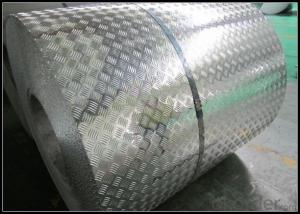Checkered Aluminium Sheets AA5083 for Making Aluminium Trailers
- Loading Port:
- Shanghai
- Payment Terms:
- TT OR LC
- Min Order Qty:
- 5 m.t.
- Supply Capability:
- 10000 m.t./month
OKorder Service Pledge
OKorder Financial Service
You Might Also Like
Item specifice
1. Specification of Checkered Aluminium Sheets AA5083 for Making Aluminium Trailers
ALLOY | AA1050 AA1060 AA1070 AA1100 ETC AA3003 AA3004 AA3005 AA3104 AA3105 ETC AA5005 AA5052 AA5083 AA5754 ETC AA8011 AA8006 AA8079 ETC |
TEMPER | H14,H16,H18,H22,H24,H26,H32,O/F |
THICKNESS | ≥0.2MM |
WIDTH | 30mm-2100mm |
COIL WGT | 2Mt - 3Mt |
COIL ID | φ508mm,φ610mm |
SURFACE | PE Protecting film |
STANDARD | GB/T 3880-2006 |
2. Application of Checkered Aluminium Sheets AA5083 for Making Aluminium Trailers
(1).Interior: wall cladding, ceilings, bathrooms, kitchens and balconies, shutters, doors...
(2).Exterior: wall cladding, facades, roofing, canopies, tunnels,column covers , renovations...
(3).Advertisement: display platforms, signboards, fascia, shop fronts...
3. Feature of Checkered Aluminium Sheets AA5083 for Making Aluminium Trailers
Surfact Quality :
Be free from Oil Stain, Dent, Inclusion, Scratches, Stain, Oxide Dicoloration, Breaks, Corrosion, Roll Marks, Dirt Streaks and other defect which will interfere with use,
Mechenical Property:
Chemical Composite and Mechanical Property
4. Certificate:
SGS and ROHS(if client request, paid by client), MTC(plant provided), Certificate of Origin(FORM A, FORM E, CO), Bureau Veritas and SGS (if client request, paid by client), CIQS certificate
5. Image of Checkered Aluminium Sheets AA5083 for Making Aluminium Trailers
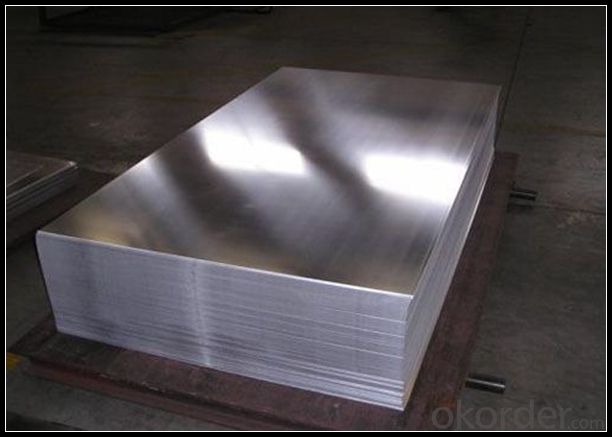
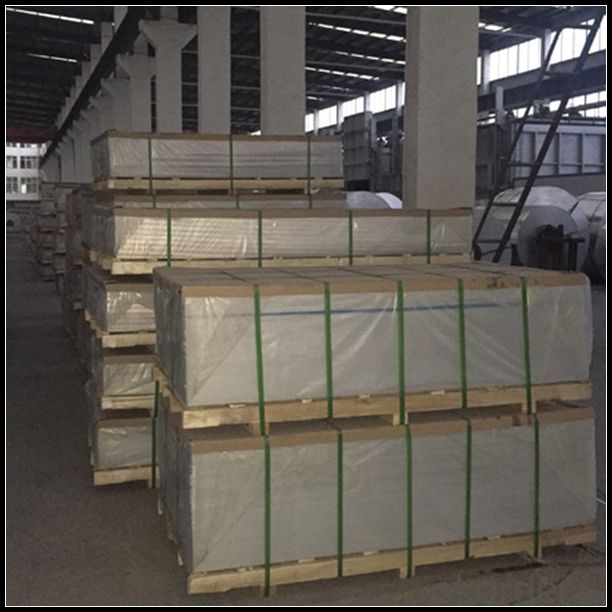
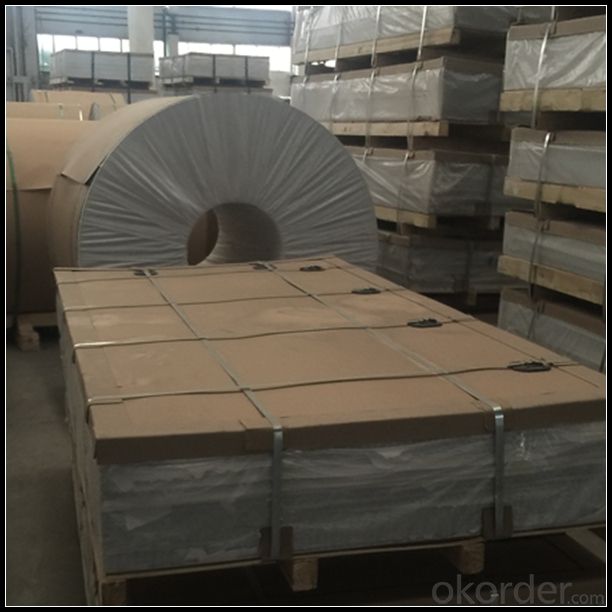
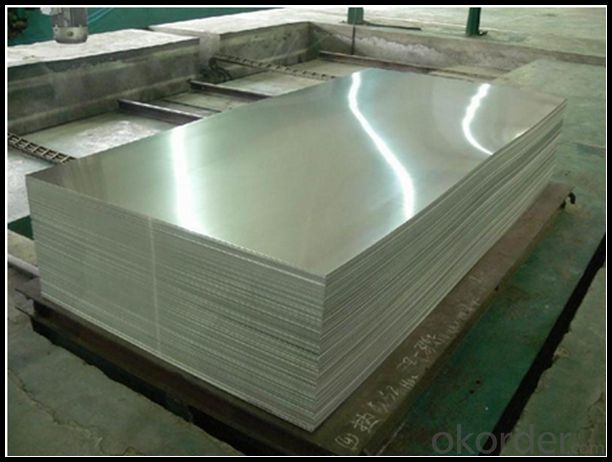
6. Package and shipping of Checkered Aluminium Sheets AA5083 for Making Aluminium Trailers
First, plastic cloth with drying agent inside; Second, Pearl Wool ; Third, wooden cases with dry agent , fumigation wooden pallets, aluminum surface could cover blue PVC film
7. FAQ
1) What is the delivery time?
Dpends on actual order, around 20 to 35 days
2)What is the QC system:
We have QC staff of 20 persons and advanced equipment, each production is with MTC traced from Aluminum ingot lot.
3) What market do you mainly sell to?
Australia, America, Asia, Middle East, Western Europe, Africa etc
- Q:Are 101 aluminum sheets suitable for food-grade applications?
- No, 101 aluminum sheets are not suitable for food-grade applications.
- Q:I need to fix some connections at my dad's house. The original wiring is aluminum, but the newer stuff he did is copper. Simple wire nuts will not suffice. Already had one melted one. I need to fix the connections, but need an economical, safe way of doing it. Suggestions?
- You need both anti-oxide paste, (follow directions), and spring type connectors to take care of the thermal creep.- A good electrical supply hose will have them. Give them the details and they'll advise you. (Last I heard, modern wirenuts are ' UL listed' for the application. Lack of the surface treatment is probaly the cause of your bad connection.) Aluminum wiring isn't bad by itself. It's the terminations that cause the problems. Bad advice Shabir - Screw connectors have no 'spring' to take up the thermal cycles of the aluminum and are exactly the WRONG thing to use for the problem in question.
- Q:Can aluminum sheets be used for chemical distillation columns?
- Yes, aluminum sheets can be used for chemical distillation columns. Aluminum is a commonly used material for constructing distillation columns due to its excellent thermal conductivity, corrosion resistance, and lightweight nature. It is particularly suitable for applications where the process conditions are relatively mild, such as low-pressure distillation or distillation of non-reactive substances. However, it is important to note that aluminum may not be suitable for all chemical distillations, especially those involving corrosive or reactive substances. In such cases, other materials like stainless steel or glass-lined steel may be more appropriate to ensure the column's durability and integrity.
- Q:Are the aluminum sheets suitable for manufacturing aircraft interiors?
- Aluminum sheets are an excellent choice for producing aircraft interiors. Not only is aluminum lightweight, but it is also strong and durable, making it perfect for aerospace applications. Its high strength-to-weight ratio allows for the creation of fuel-efficient and lightweight aircraft. Moreover, aluminum sheets are highly resistant to corrosion, which is vital in the aerospace industry. Aircraft interiors are exposed to various environmental factors like humidity and temperature changes. The corrosion resistance of aluminum ensures that the aircraft interior components remain reliable and long-lasting, thereby reducing maintenance and replacement expenses. Additionally, aluminum sheets can be easily fabricated and shaped into different forms. This feature enables the production of intricate and customized aircraft interior components. Aluminum sheets can be effortlessly cut, bent, and welded, offering design flexibility and allowing manufacturers to create visually appealing interior designs. Apart from these technical advantages, aluminum is also an environmentally sustainable material. It is 100% recyclable, making it an eco-friendly option for aircraft interiors. Recycling aluminum requires significantly less energy compared to primary aluminum production, thereby reducing the carbon footprint associated with manufacturing. In conclusion, the combination of its lightweight nature, corrosion resistance, ease of fabrication, and sustainability makes aluminum sheets highly suitable for manufacturing aircraft interiors.
- Q:Can aluminum sheet be used for medical applications?
- Yes, aluminum sheet can be used for certain medical applications. Aluminum is a lightweight and durable material that is resistant to corrosion, making it suitable for various medical devices and equipment. For example, aluminum sheets can be used for manufacturing prosthetic limbs, braces, and orthopedic implants. Additionally, aluminum can be used in the production of medical instruments, such as surgical trays, sterilization containers, and imaging equipment. However, it is important to note that aluminum may not be suitable for all medical applications, as certain medical devices may require specific properties or materials to meet regulatory standards and ensure patient safety. Therefore, the use of aluminum sheet in medical applications should be determined on a case-by-case basis, considering the specific requirements and regulations of each application.
- Q:Can aluminum sheet be used for signage?
- Certainly! Aluminum sheet is a viable option for signage purposes. Its durability, versatility, and cost-effectiveness make it a popular choice among sign makers. Being a lightweight material, it is resistant to corrosion, making it suitable for both indoor and outdoor signage. With aluminum sheet, one can easily cut, shape, and form it into various sizes and designs, allowing for customizable signage options. Moreover, it is effortless to print or engrave upon, making it perfect for displaying text, graphics, and logos. Its sleek and professional appearance enhances its appeal for signage purposes. In conclusion, aluminum sheet is an excellent choice for signage due to its durability, versatility, and aesthetic qualities.
- Q:Where else besides deodorant can we find aluminum?
- aluminum foil
- Q:What are the different bending techniques for aluminum sheets?
- There are several bending techniques that can be used for aluminum sheets. Some of the most commonly used techniques include: 1. Air bending: In this technique, a punch is used to apply force on the sheet, which causes it to bend along a straight line. The bend angle is determined by the amount of force applied. 2. Bottom bending: This technique involves clamping the sheet between a bottom tool and a die, while a punch is used to apply force on the sheet from the top. The sheet is bent around the die, resulting in a precise and consistent bend angle. 3. Coining: Coining is a technique in which the sheet is bent using a punch and a die, but with significantly higher force applied compared to other bending techniques. This creates a crisp and sharp bend with minimal springback. 4. Rotary bending: In rotary bending, the sheet is bent around a rotating bending roll. The roll exerts pressure on the sheet, causing it to bend gradually and smoothly. 5. Roll bending: This technique involves passing the aluminum sheet through a series of rollers, which gradually bend the sheet to the desired shape. It is often used for bending large sheets or for creating cylindrical shapes. 6. Press braking: Press braking is a versatile technique that uses a press brake machine to bend the sheet. The machine consists of a punch, a die, and a back gauge, which allows for precise and repeatable bends. Each bending technique has its own advantages and limitations, and the choice of technique depends on factors such as the desired bend angle, the thickness of the sheet, and the overall shape of the final product. It is important to carefully select the appropriate bending technique to ensure the desired result and avoid any defects or damage to the aluminum sheet.
- Q:Are aluminum sheets suitable for electronics applications?
- Yes, aluminum sheets are suitable for electronics applications. Aluminum is a versatile and lightweight metal that offers excellent conductivity, making it an ideal choice for various electronic components and applications. Aluminum sheets are commonly used in the electronics industry for heat sinks, enclosures, PCB (printed circuit board) substrates, and connectors. Heat sinks made from aluminum sheets help dissipate heat generated by electronic devices, ensuring their optimal performance and preventing overheating. Additionally, aluminum sheets are often used as enclosures for electronic devices due to their durability, corrosion resistance, and ability to shield against electromagnetic interference. They provide a protective casing that ensures the safety and functionality of delicate electronic components. Aluminum sheets are also used as PCB substrates due to their excellent thermal conductivity. They help in dissipating heat generated by the electronic components on the PCB, preventing damage and ensuring the proper functioning of the circuit. Furthermore, aluminum is a cost-effective material compared to other metals commonly used in electronics, such as copper. This makes it a popular choice for various electronic applications, especially for mass production. In conclusion, aluminum sheets are highly suitable for electronics applications due to their conductivity, durability, corrosion resistance, and ability to dissipate heat. They offer numerous benefits and are widely used in the electronics industry for heat sinks, enclosures, PCB substrates, and connectors.
- Q:What are the different methods for engraving aluminum sheets?
- There are several different methods for engraving aluminum sheets, each with its own advantages and applications. 1. Laser engraving: This is one of the most popular methods for engraving aluminum sheets. It uses a laser beam to vaporize the aluminum surface, creating a permanent and precise engraving. Laser engraving offers high precision, speed, and versatility, making it suitable for a wide range of applications. 2. Mechanical engraving: This method involves using a mechanical tool, such as a rotary cutter or diamond-tipped tool, to physically remove material from the aluminum surface. Mechanical engraving can achieve deep and detailed engravings, making it suitable for applications where durability and depth are important. 3. Chemical etching: Chemical etching involves using chemicals to selectively remove material from the aluminum surface. It is a highly precise method that can create intricate and detailed designs. Chemical etching is often used in industries such as electronics and aerospace, where precision and high-quality finishes are required. 4. CNC milling: Computer Numerical Control (CNC) milling is a method that uses a computer-controlled machine to remove material from the aluminum sheet. It can achieve precise and complex engravings, making it suitable for applications that require intricate designs or 3D engravings. 5. Hand engraving: Hand engraving involves using handheld tools, such as gravers or chisels, to manually create engravings on the aluminum surface. While it may not offer the same level of precision as other methods, hand engraving allows for artistic freedom and customization. Each method has its own advantages and limitations, so the choice of engraving method depends on factors such as the desired design, level of detail, production volume, and budget.
1. Manufacturer Overview |
|
|---|---|
| Location | |
| Year Established | |
| Annual Output Value | |
| Main Markets | |
| Company Certifications | |
2. Manufacturer Certificates |
|
|---|---|
| a) Certification Name | |
| Range | |
| Reference | |
| Validity Period | |
3. Manufacturer Capability |
|
|---|---|
| a)Trade Capacity | |
| Nearest Port | |
| Export Percentage | |
| No.of Employees in Trade Department | |
| Language Spoken: | |
| b)Factory Information | |
| Factory Size: | |
| No. of Production Lines | |
| Contract Manufacturing | |
| Product Price Range | |
Send your message to us
Checkered Aluminium Sheets AA5083 for Making Aluminium Trailers
- Loading Port:
- Shanghai
- Payment Terms:
- TT OR LC
- Min Order Qty:
- 5 m.t.
- Supply Capability:
- 10000 m.t./month
OKorder Service Pledge
OKorder Financial Service
Similar products
New products
Hot products
Hot Searches
Related keywords
